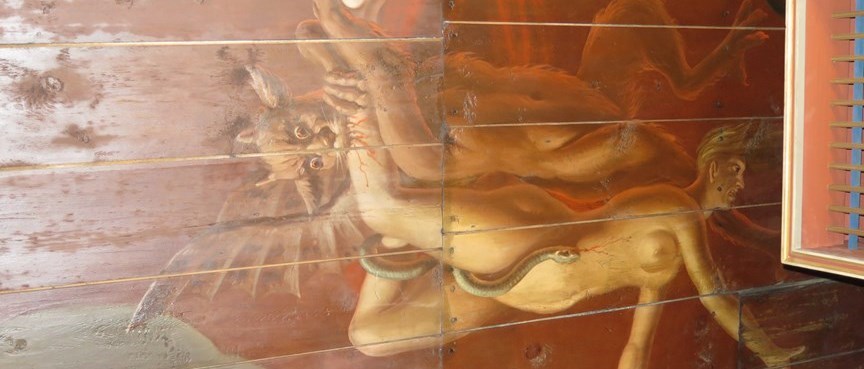Dramatic ceilings in 18th-century churches

The most frequent motif for ceilings in 18th century churches was the last judgement, when Christ is depicted judging the raised souls to either heaven or hell. There was no compunction about painting very explicit representations of tormented people in hell. Biblical scenes were also common along the sides of the churches to illustrate the priest's sermons.
A story untold
The inventory was carried out by Kajsa Nyström Rudling, a curator at Västarvet's department for the cultural environment.
Can you tell us a little more about what is typical of the church ceilings here in Västra Götaland?
"What is remarkable is that painted wooden ceilings are so typical of West Sweden. They are found in Halland, Bohus county, Västergötland and west Småland, as well as in Dalsland and Värmland. Outside these areas there are hardly any at all. The idea was that we would shine a light on these paintings, often overshadowed by medieval frescos, for example, which have been given far more attention," says Kajsa Nyström Rudling.
Many painted ceilings in Gothenburg
In the Gothenburg diocese there are around 60 preserved church ceilings. The diocese is long and narrow in shape, extending through the whole of Halland and Bohus counties